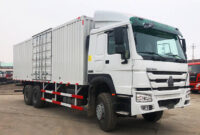2wd Pulling Trucks For Sale: Your Ultimate Guide to Entering the Sled Pull Arena pickup.truckstrend.com
The roar of a high-horsepower engine, the smell of burning diesel or race fuel, and the ground-shaking tremor as a heavily modified truck strains against a weighted sled – welcome to the thrilling world of truck pulling. Specifically, 2-wheel drive (2WD) pulling trucks represent a unique and exciting segment of this motorsport, demanding precise engineering, immense power, and skillful driving. For enthusiasts looking to dive headfirst into this adrenaline-pumping sport, finding a "2WD Pulling Truck For Sale" is often the most direct path to the pulling track.
This comprehensive guide will navigate the intricacies of purchasing a 2WD pulling truck, offering insights into what makes these machines tick, where to find them, crucial considerations before buying, and practical advice to ensure a successful entry into the competitive pulling scene.
2wd Pulling Trucks For Sale: Your Ultimate Guide to Entering the Sled Pull Arena
What Defines a 2WD Pulling Truck? The Anatomy of a Powerhouse
Unlike their street-legal brethren, 2WD pulling trucks are purpose-built beasts designed to transfer maximum power to the ground. While the basic silhouette might resemble a pickup, almost every component has been heavily modified or custom-fabricated for the singular goal of pulling a heavy sled as far as possible.
Here’s a breakdown of the key components and modifications you’ll find:
- Chassis and Frame: The backbone of any pulling truck, the frame is often heavily reinforced, boxed, or even custom-built from scratch. Weight distribution is critical, with ballast strategically placed to optimize traction over the rear wheels without lifting the front.
- Engine: This is the heart of the beast. Common choices include massive big-block gasoline engines (like Chevy 572s, Ford 460s, or Mopar Hemi variations) or heavily modified diesel engines (Cummins, Power Stroke, Duramax). These engines are pushed to extreme limits, often featuring custom cylinder heads, high-lift camshafts, forced induction (turbos, superchargers), methanol injection, and specialized fuel systems to produce anywhere from 1,000 to over 3,000 horsepower.
- Drivetrain: Built to withstand immense torque, the drivetrain features heavy-duty transmissions (often automatics like Powerglides or TH400s, or custom manual units), ultra-strong driveshafts, and most critically, massive rear axles. These axles are typically custom-fabricated or heavily modified from large commercial truck axles (like Rockwells or Meritors) and feature spools or welded differentials to ensure both rear wheels receive equal power, along with robust axle shafts.
- Suspension: Unlike off-road trucks, pulling truck suspensions are designed to be stiff and control weight transfer. The front suspension is often solid-mounted or has very limited travel, while the rear suspension is set up to "squat" and transfer weight to the rear tires, enhancing traction. Limit chains or solid links are common to prevent excessive suspension travel.
- Tires: The connection to the track. Pulling trucks use highly specialized, often "cut" or "shaved" tires. These are typically agricultural tires or purpose-built pulling tires with deep, aggressive treads that are sometimes modified to optimize the biting edge for maximum grip on the pulling surface.
- Safety Features: Given the extreme forces involved, safety is paramount. Essential features include full roll cages, five-point racing harnesses, kill switches (to instantly shut off the engine), driveshaft loops, scatter shields for transmissions and clutches, and fire suppression systems.

Why Buy a Pre-Built 2WD Pulling Truck? The Advantages of "For Sale"
While the idea of building a pulling truck from the ground up can be appealing, purchasing a pre-built "2WD Pulling Truck For Sale" offers significant advantages, especially for newcomers:
/https://fbi.cults3d.com/uploaders/13851496/illustration-file/e03cab5c-30f9-42f6-912b-9b02607a620f/1.jpg)
- Cost-Effectiveness: Building a competitive pulling truck from scratch can easily cost hundreds of thousands of dollars, often exceeding the price of a well-maintained, proven used truck. You’re leveraging the previous owner’s investment in parts and labor.
- Time Savings: Designing, fabricating, and tuning a pulling truck is a multi-year project for even experienced builders. Buying allows immediate entry into the sport.
- Proven Performance: Many trucks for sale come with a history – track records, dyno sheets, and competitive finishes. This provides confidence in the vehicle’s capabilities.
- Expertise Inherited: You benefit from the previous builder’s knowledge and experience. The truck has likely undergone extensive testing and refinement.
- Reduced Learning Curve: While you’ll still learn a lot, you won’t be troubleshooting fundamental build issues, allowing you to focus on driving technique and minor tuning.
Where to Find Your Next 2WD Pulling Truck For Sale
Finding the right pulling truck requires knowing where to look:
- Online Marketplaces & Forums: Websites like RacingJunk.com, Race-Dezire.com, and specialized truck pulling forums are prime hunting grounds. Facebook groups dedicated to truck pulling (e.g., "Truck Pulling Classifieds," "Pulling Trucks For Sale") are also incredibly active.
- Pulling Events: Attending local and national truck pulling events is invaluable. You can see trucks in action, network with owners and builders, and often find "For Sale" signs on trucks in the pits.
- Specialized Builders & Dealers: Some shops specialize in building and selling pulling trucks. They often have inventory or can help source a vehicle.
- Word-of-Mouth: The truck pulling community is tight-knit. Let people know you’re looking, and you might uncover a hidden gem.
Important Considerations Before Making a Purchase
Buying a pulling truck is a significant investment. Here’s what to keep in mind:
- Budget: Be realistic. Beyond the purchase price, factor in transportation, ongoing maintenance, replacement parts (which are often custom and expensive), fuel, entry fees, and travel costs.
- Pulling Class Rules: This is paramount! Truck pulling has various classes (e.g., Street Stock, Modified, Super Stock, Pro Mod) with strict rules regarding engine type, displacement, chassis modifications, tire size, and weight. Ensure the truck you’re considering fits the class you intend to compete in. Rules vary by sanctioning body (e.g., NTPA, PPL, local associations), so check the specific rules for your region.
- Condition and Inspection:
- Frame Integrity: Look for cracks, repairs, or signs of stress.
- Engine Health: Ask for recent dyno sheets, compression test results, and maintenance records. Listen to it run if possible. Check for leaks.
- Drivetrain: Inspect the transmission, driveshaft, and rear axle for excessive play, leaks, or damage.
- Safety Equipment: Verify the roll cage, harnesses, and fire suppression system are up to current class rules and in good condition.
- Tires: Assess the condition of the pulling tires; new sets are very expensive.
- Bring an Expert: If you’re not mechanically inclined, bring a seasoned pulling veteran or a trusted mechanic to help with the inspection.
- Documentation and History: Request logbooks, build sheets, dyno results, and a history of competitive performance. A well-documented truck suggests a meticulous owner.
- Logistics: How will you transport the truck? Do you have suitable storage? Pulling trucks are large and require specialized trailers.
- Seller’s Reputation: Research the seller. Are they well-known in the pulling community? Do they have a good reputation?
Tips for a Successful Purchase
- Define Your Goals: Are you looking for casual fun, or do you aspire to competitive national titles? This will dictate the level of truck you need.
- Set a Realistic Budget: Don’t forget the hidden costs.
- Do Your Homework: Research the specific class rules you want to compete in before looking at trucks. Understand common issues for certain engine or chassis setups.
- Ask Detailed Questions: Don’t be afraid to ask about every component, maintenance schedule, and any known quirks.
- Inspect Thoroughly: As mentioned, bring a knowledgeable friend or professional. Don’t rush.
- Negotiate Respectfully: Be prepared to negotiate, but also understand the value of a well-built, proven machine.
- Get Everything in Writing: A bill of sale detailing the truck’s condition, included parts, and agreed-upon price is crucial.
Potential Challenges and Solutions
- Hidden Issues: Even with a thorough inspection, issues can arise. Solution: Allocate a contingency fund for unexpected repairs and build a relationship with a good pulling truck mechanic.
- Transportation: Moving these large vehicles requires specialized equipment. Solution: Factor in the cost of a large trailer and a suitable tow vehicle, or arrange professional transport.
- Learning Curve: Driving a pulling truck is different from driving anything else. Solution: Seek advice from experienced pullers, attend pulling clinics, and start with less aggressive pulls to get a feel for the truck.
- Unexpected Costs: Parts are expensive, and custom fabrication is common. Solution: Research common wear items for the specific truck and budget accordingly.
- Rule Changes: Sanctioning bodies periodically update rules. Solution: Stay informed by regularly checking the rules of your chosen pulling association.
2WD Pulling Trucks For Sale: Sample Price Guide
The price of a 2WD pulling truck varies wildly based on its class, engine, components, and competitive history. This table provides a general idea:
| Category | Typical Price Range | Key Features |
|---|




